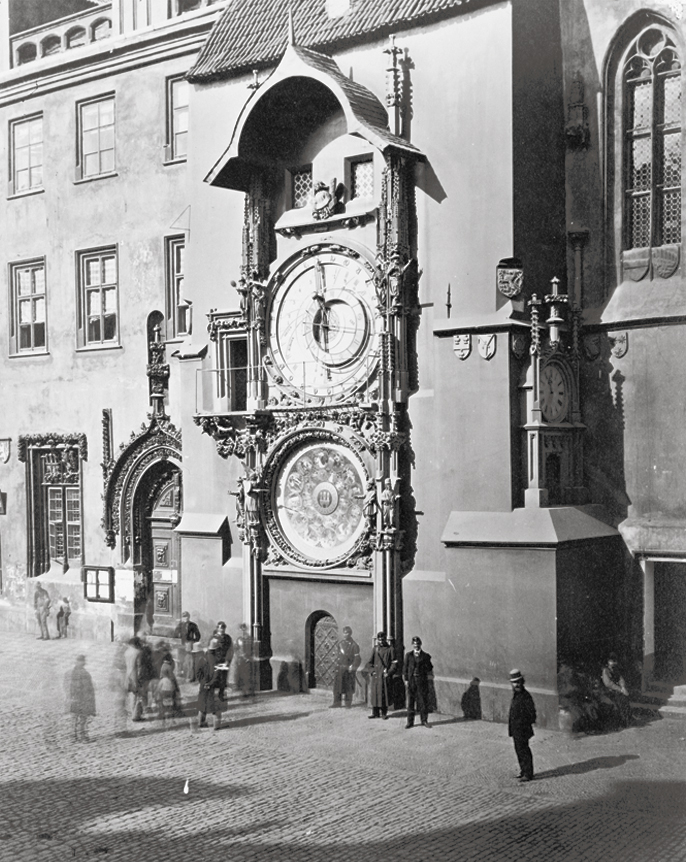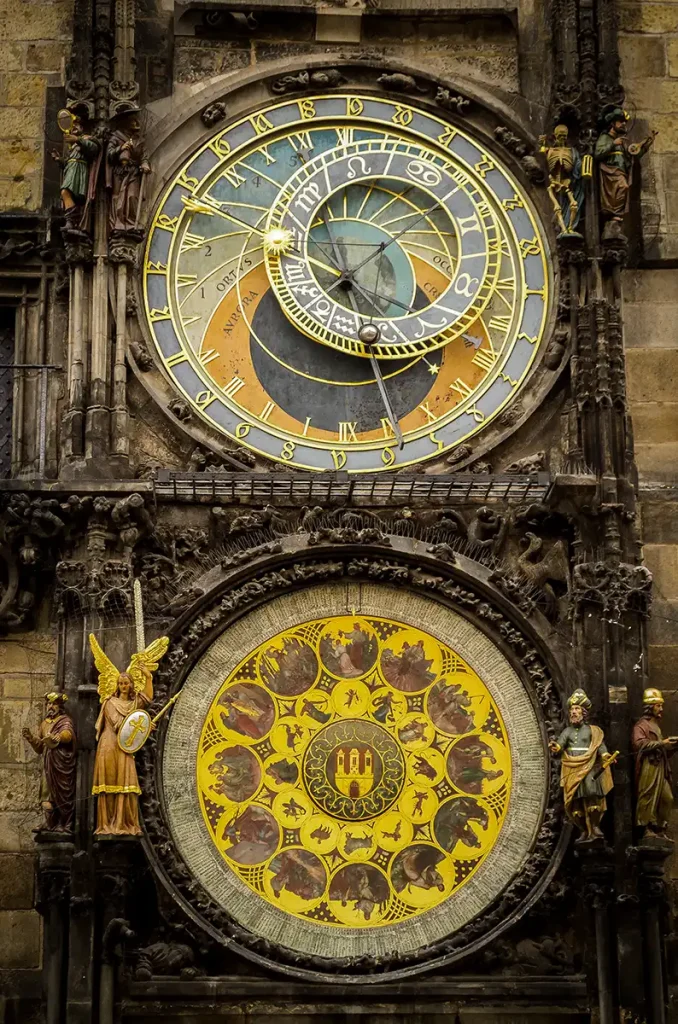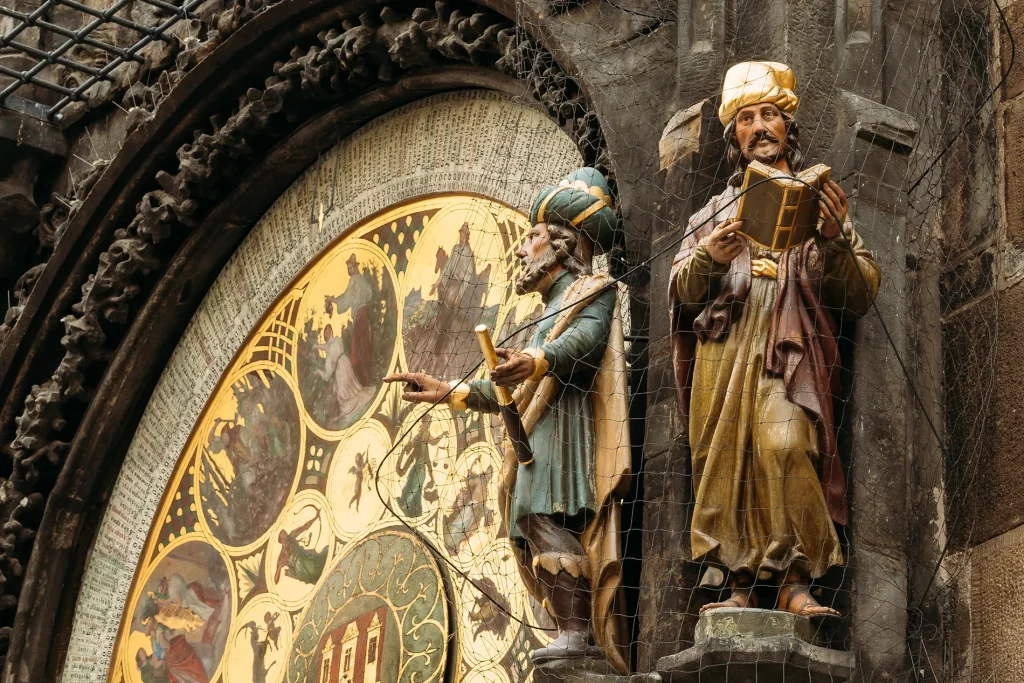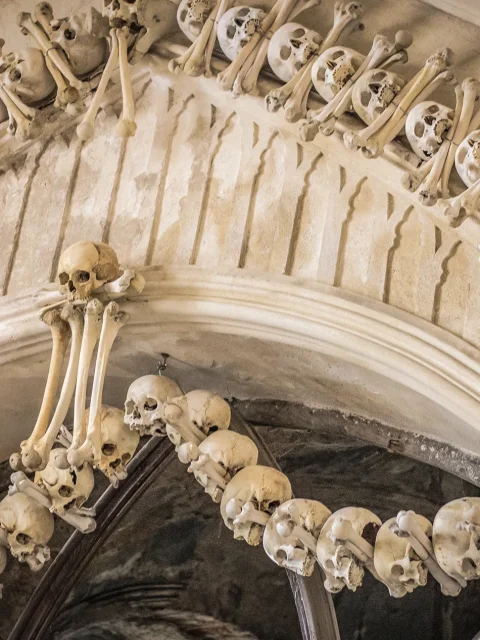The Old Town Astronomical Clock, also known as the Prague Astronomical Clock, is a medieval astronomical clock. It is located on the south side of the tower of the Old Town Hall in Prague. This is probably the best-preserved medieval clock ever. The clock was first historically documented in a record on October 9, 1410
What is the Prague Astronomical Clock?
This mechanical clock is responsible for driving the clock face, the calendar disk with zodiac signs, as well as the movement of the wooden apostle figures and accompanying figures.
Admission (tickets)
300 Kč (app. 12 €)
Opening hours
9AM – 20PM
Parade of the Apostles
Every hour
Additional fee for a lift
100 kč (app. 4 €)
The Czech word for an astronomical clock is orloj (from Latin horologium “clock” and Italian “orologio”) is usually a tower clock that shows not only the time but also other information, such as the position of the Sun and the Moon in the sky, the phase of the Moon, the positions of other planets, solar time, and more. In a sense, the clock can be considered a precursor to the planetarium.
Medieval clock not only shows the movements of celestial bodies, but also speaks to us through the symbolism of the Middle Ages. Every hour, the clock comes to life with a fascinating performance of marching apostles, moving statues around the clock, all culminating in the powerful sound of the bell at the top of the tower.
The clock mechanism is hidden in the wall of the town hall in a stone tower, to which there are two keys: one is held by the clockmaker, the other is at the city hall. Until the end of the war, the clock was wound with a crank, and then it was connected to an electric motor.
The sidereal time was marked on the clock only in 1865, and the star indicator is firmly linked to the zodiac in the position of the vernal equinox. It is the only indicator that does not relate to the movement of the Sun but to the stars, i.e., to the universe.
The medieval astronomical clock on the tower of the Old Town Hall in the center of Prague is still running after 600 years despite its age. Every hour, the procession of 12 apostles amazes crowds of admirers.
The Prague Clock’s History
Did you know that the Prague Astronomical Clock is a unique medieval monument? It was built during the cultural peak of the Czech lands, under the reign of Charles IV, the Czech king and Holy Roman Emperor who turned Prague into the intellectual, cultural, and political center of Europe.
Legend has it that the clock was made by the master Hanuš and that the Prague councilors were so pleased with it that they rewarded the clockmaker by blinding him so that he could never again create anything like it. Hanuš, in turn, sought revenge and stopped the clock for a long time. But this is just a legend, as in reality, the clock was made in 1410 by Mikuláš of Kadaň, and Hanuš merely improved it in the late 15th century.
Before 1911, the clock had painted glass windows, which were later replaced with stained glass windows. It’s amazing how this clock has stood the test of time, and we are lucky to have it as a part of our historical heritage.
But here’s the kicker: the Staroměstský Orloj recently underwent a massive restoration! The medieval machine was carefully dismantled and restored before being returned to its place on September 28, 2018. As part of the renovation, a new clock face – a 24-hour clock – was installed, and new doors were added to the apostles.
Unlike most clocks of the time, which were installed primarily in church interiors, the Prague Astronomical Clock was carefully integrated into the supporting pillars of the Old Town Hall tower. It was oriented towards the outside of the square to be a time and astrology indicator as well as a part of life in the heart of Prague.
Discover the secrets inside the Old Town Hall
If you can’t bear just watching the clock from the outside, don’t despair. The Old Town Hall offers a tour of its interiors, including a visit to the chapel, from where you can see the carved figures of apostles through the window. You will be so close to the famous figurines that you can clearly see their faces.
What else is there to see inside the Old Town Hall? The 14th-century Old Town Hall, with its rich history full of famous events and mysterious legends, is undoubtedly one of the most significant landmarks in Prague. However, few people know the wealth that hides inside its interiors. And even fewer tourists realize that they can go inside and take a look.
In addition to the aforementioned Gothic chapel with a model of the Marian Column, where you can take a close look at the apostles, it is worth climbing the tower with a view and admiring the panorama of the old Prague. You will soak up the festive atmosphere while walking through historical halls, while a touch of adventure awaits you in the Romanesque-Gothic underground, where, thanks to a historical exhibition, you can embark on a “journey through time”.
An unusual and therefore more interesting tour is the visit to the Sewer System under the Old Town Hall. And, of course, the tour of the Old Town Hall is accompanied by the hourly playing of the famous Astronomical Clock.
What shows Astronomical Clock in Prague?
Old Czech time (Gothic numerals 1-24) on a swaying ring on the periphery.
German, i.e., the current Central European time, on a fixed disk twice I-XII with noon at the zenith. The clockmaker Taborsky noted it after 1551. Later, when German time was decreed the only way of indicating time in Bohemia, German time was already displayed on the clock, so the Old Czech way was preserved to this day.
Planetary hours (Babylonian time) are the areas between curves from the sunrise to its sunset. The hour is determined by projecting the center of the solar symbol into the designated areas 1-12.
The same curves define the area of the night, but they are not marked on the clock. The table above the clock enabled identification of the planetary hours, but it was completely removed in 1865.
In astrology, the ruling hours of the seven planets in order of the Sun – Venus – Mercury – Moon – Saturn – Jupiter – Mars are important. The planetary hours relate to the now-forgotten astrological function of the clock.





















